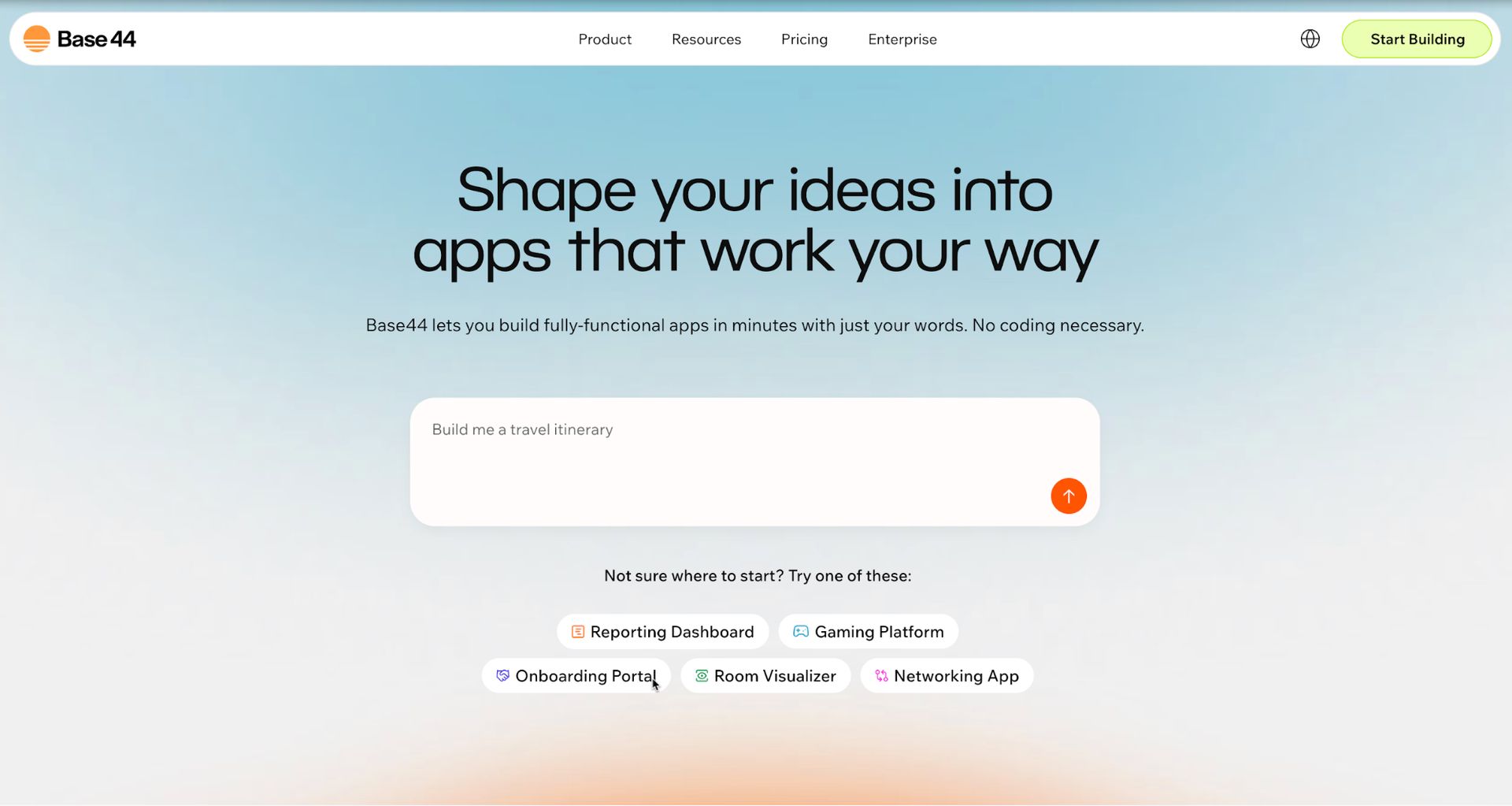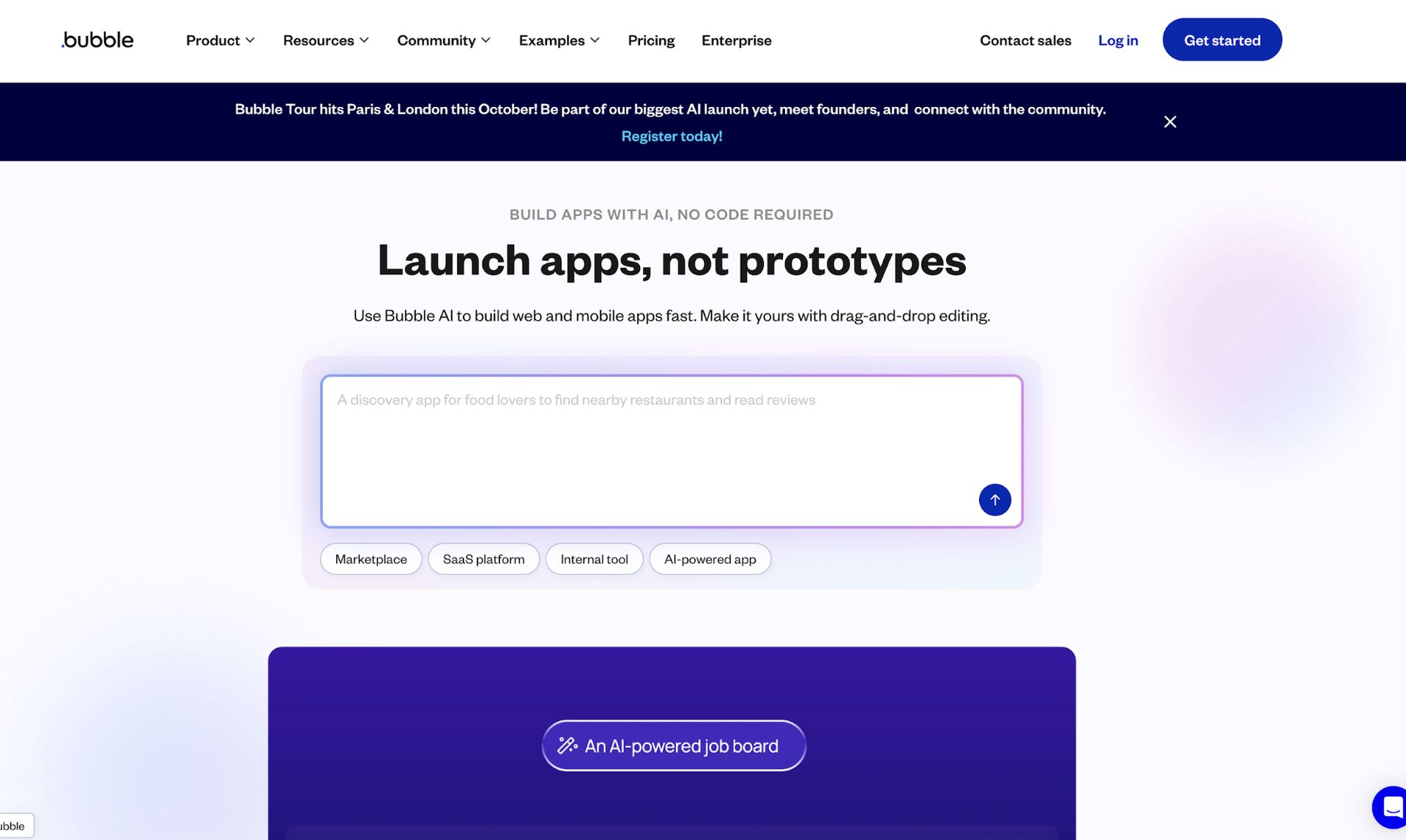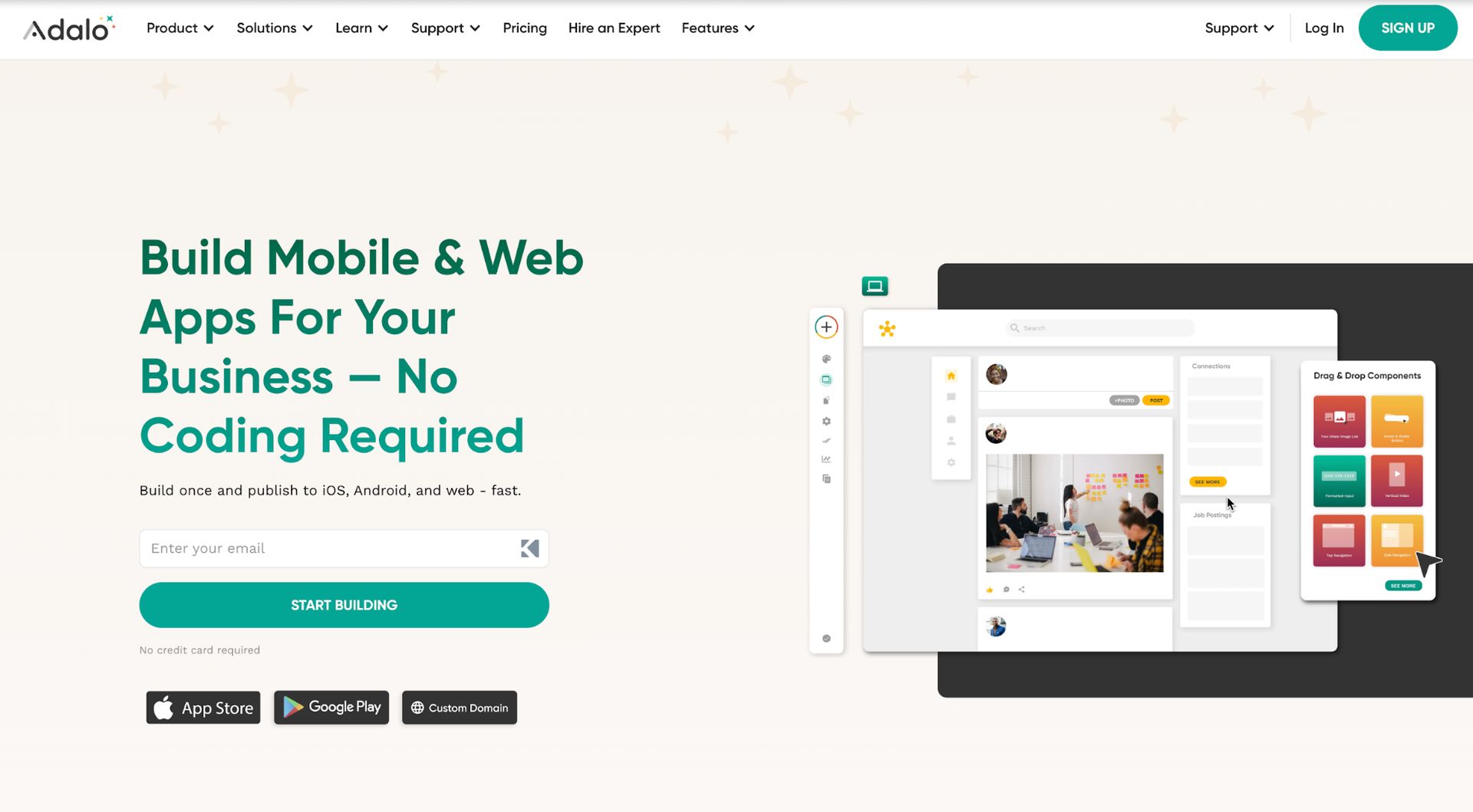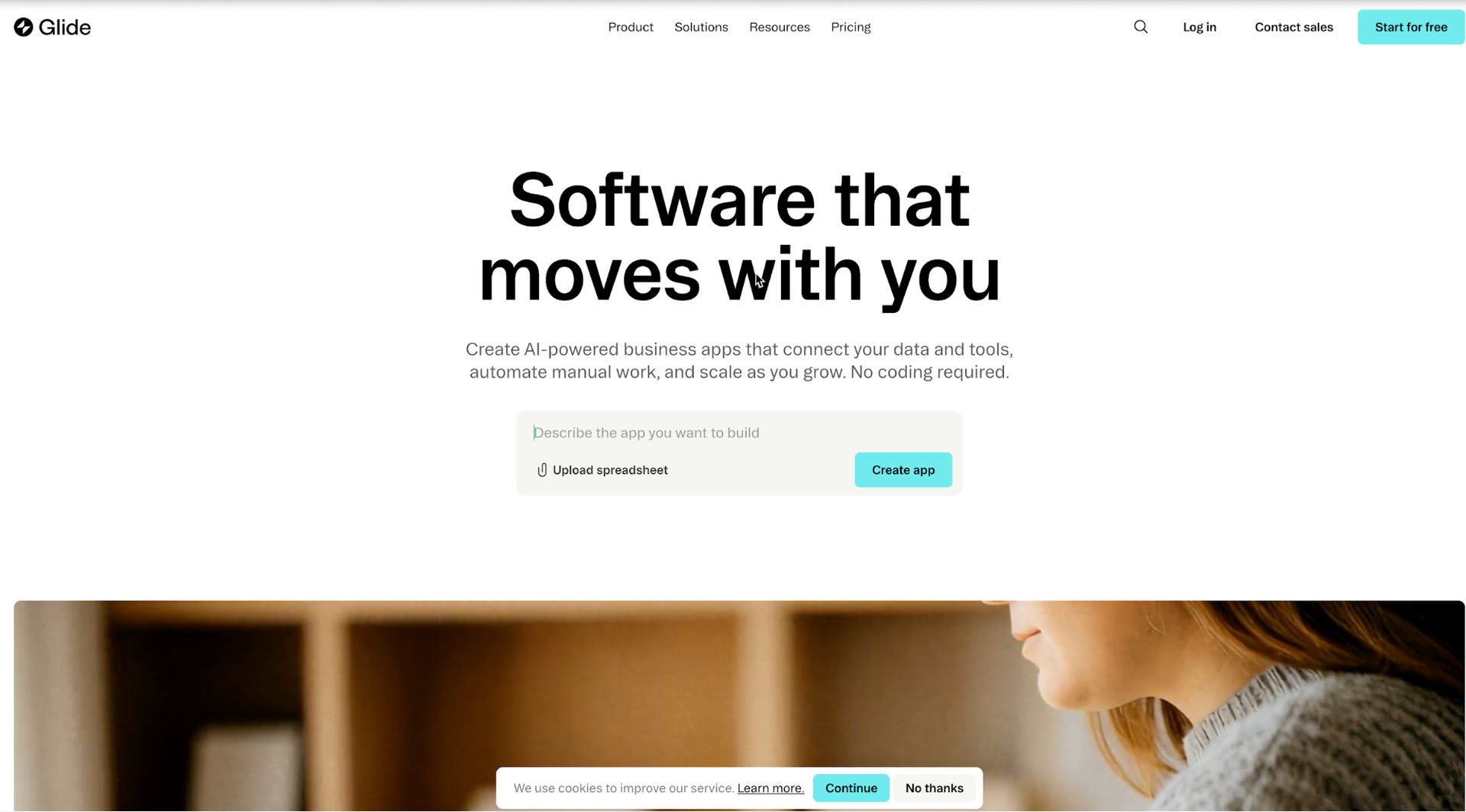Creating a custom app can completely change how you manage your daily tasks, streamline your workflow, and connect with customers. As an entrepreneur, you can build a tool perfectly suited to your business needs, helping you stay organized and work more efficiently, all without writing a single line of code.
This guide will show you why building your own app is a game-changer and how you can do it easily using an AI app builder. We’ll explore the best tools available, and walk you through the simple steps to bring your app idea to life. Get ready to build something that makes your work life easier.
TL;DR: Your guide to building a business app
This article explains how you, as an entrepreneur, can create a custom app to improve your productivity using a no-code AI app builder. We cover the benefits, the step-by-step process, and introduce you to some of the best platforms on the market.
| Section | Key Takeaway | Featured Tools |
| Why Build an App? | Custom apps boost productivity, centralize your tools, and create better customer experiences. | N/A |
| How to Build an App | Follow a simple process: define your goal, design the user flow, build with a no-code tool, and launch. | General no-code process |
| Leading Builders | There are several powerful no-code AI app builders to choose from, each with unique strengths. | Base44, Bubble, Adalo, Glide |
Why entrepreneurs should build their own apps
As an entrepreneur, you’re constantly juggling multiple responsibilities, from managing projects to communicating with clients. Imagine having a single, customized tool that helps you do it all more effectively. That’s the power of building your own app. It’s not about creating the next big social media platform; it’s about crafting a practical solution to your unique business challenges.
One of the biggest advantages is a major boost in productivity. Instead of switching between spreadsheets, note-taking apps, and project management software, you can consolidate all these functions into one central hub. A custom app can automate repetitive tasks, like sending follow-up emails or updating project statuses, freeing up your time to focus on growth. You get to design a workflow that mirrors exactly how you work best, removing friction and making your day-to-day operations smoother.
A custom app can also transform how you engage with your customers. You could build a client portal where customers can track their projects, access important documents, and communicate with you directly. This not only improves organization but also provides a professional and personalized experience that builds trust and loyalty. It shows your clients that you are invested in providing them with the best service possible.
How to build an app without coding
The idea of building an app might sound complex, but with a no-code AI app builder, it’s surprisingly straightforward. These platforms use visual, drag-and-drop interfaces that let you design and build powerful apps without any programming knowledge.
Here’s a simple step-by-step guide to get you started:
Step 1: Define your app’s purpose
Before you start building, get clear on what you want your app to do. What specific problem will it solve? Start with a core function. For example, your goal could be to create an app that manages client projects, tracks your sales pipeline, or automates your content schedule. Keeping your initial goal focused will make the building process much more manageable.
Step 2: map out the user flow
Think about how someone will navigate your app. Sketch out a simple flowchart on paper or with a digital tool. What happens when you open the app? What buttons will you need? How will you get from one screen to the next? This map will be your blueprint, guiding you as you start to build the different sections of your app.
Step 3: Choose your no-code AI app builder
Select a platform that aligns with your goals. If you need a powerful and flexible tool with AI capabilities, AI app builders might be a great fit. Most platforms offer free trials, so take some time to explore a few options and see which one feels most intuitive to you.
Step 4: Design and build your app
This is where your idea comes to life. Using the builder’s visual editor, you’ll start dragging and dropping elements like text boxes, buttons, forms, and image galleries onto your canvas. Connect your pages according to the user flow you mapped out. You’ll also connect your data, whether that’s from a simple spreadsheet or an internal database. The AI components of these builders can help you by suggesting layouts or even generating parts of the app based on your descriptions.
Step 5: Test and get feedback
Once you have a working version of your app, test it thoroughly. Click every button and try every feature to make sure it works as expected. If possible, ask a few friends or colleagues to try it out and give you feedback. This process will help you find any bugs or areas for improvement before you launch it.
Step 6: Launch and iterate
When you’re happy with your app, it’s time to launch. You can share it with your team, your clients, or even publish it to the app stores, depending on the platform you used. Building an app is an ongoing process. As your business evolves, you can easily go back into your no-code AI app builder to add new features and make improvements.
Leading no-code AI app builders
The market is full of fantastic tools that can help you build your app. Each has its own strengths, so the best one for you depends on what you want to create. Here are some of the top contenders.
Base44
Base44 stands out as a leading no-code AI app builder designed specifically for creating internal business tools and client portals. Its real power lies in its ability to let you build sophisticated applications that are both powerful and easy to manage. You can create custom CRMs, project management dashboards, inventory trackers, and more.
What makes Base44 particularly compelling is its integration of AI. The platform uses AI to help you build faster and create smarter applications. You can automate complex workflows, generate insights from your business data, and build features that learn and adapt over time. Base44 is an excellent choice for entrepreneurs who want to build a robust, data-driven application to run their business more efficiently. It offers the flexibility to start small and scale up as your needs grow.

Bubble
Bubble is one of the most powerful and versatile no-code app builders available. It gives you complete design freedom and allows you to build complex, interactive, multi-user web applications like marketplaces, social networks, and booking platforms. If you can dream it, you can probably build it with Bubble.
The learning curve is a bit steeper compared to other tools, but its extensive feature set and customization options make it worth the effort for those with ambitious projects. Bubble is ideal for entrepreneurs who want to build a fully functional web app with a custom database and logic without being limited by templates.

Adalo
Adalo is a great choice for building native mobile apps for both iOS and Android, as well as web apps. Its component-based system is very intuitive, making it easy to assemble your app’s interface by simply dragging and dropping pre-built components. You can connect to external APIs or use Adalo’s own internal database.
One of Adalo’s biggest strengths is its ability to publish directly to the Apple App Store and Google Play Store. This makes it a fantastic option for anyone who wants to create a true mobile app experience for their customers or team.

Glide
Glide is famous for its simplicity and speed. It allows you to create beautiful, functional apps from a Google Sheet, Airtable base, or its own data source in minutes. It’s an excellent tool for building simple internal tools, directories, event apps, and employee portals.
While it may not have the same level of customization as Bubble, Glide’s ease of use is unmatched. If you need to get a simple, elegant app up and running quickly to solve a specific problem, Glide is one of the best places to start. It’s perfect for entrepreneurs who want to test an app idea or build a useful tool without a big time investment.

How much does it cost to build an app with a no-code builder?
The cost can vary quite a bit depending on the platform and the features you need. Many no-code AI app builders offer a free plan that lets you build and test your app. Paid plans typically start around $25-$50 per month and can go up to several hundred dollars for business or agency plans that offer more capacity, advanced features, and better support. It’s significantly more affordable than hiring a development team, which can cost tens of thousands of dollars.
Can I build a truly unique app or will it look generic?
Absolutely. While some simpler tools use templates, more advanced platforms like Base44 and Bubble offer huge design freedom. You can customize the layout, colors, fonts and branding to create an app that perfectly matches your brand.
But can AI replace designers completely? While AI builders give you a lot of creative control, a designer’s expertise in user experience and branding is still incredibly valuable for creating a professional, user-friendly app. So, while you can create something unique on your own, a designer can help you take it to the next level.
How secure are apps built on no-code platforms?
Security is a top priority for all major no-code platforms. They handle the technical side of security, including server maintenance, data encryption, and user authentication, so you don’t have to. Companies like Base44 and Bubble are trusted by thousands of businesses and invest heavily in keeping their platforms and the apps built on them secure. As with any application, it’s also important for you to follow best practices, like using strong passwords and managing user permissions carefully.





